Internal Security and Disaster Management: July 2025 Current Affairs | General Test Preparation for CUET UG - CUET Commerce PDF Download
Pralay Missile
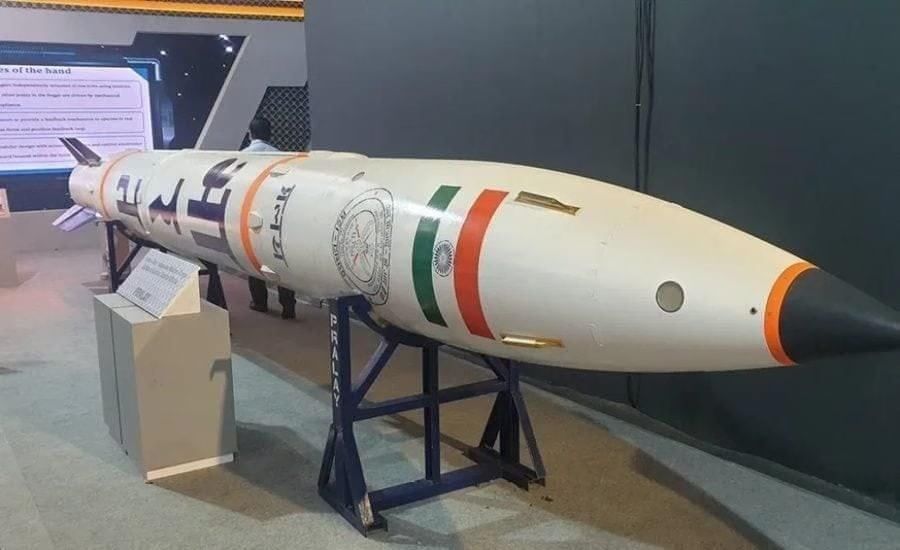 Why in News?
Why in News?
Recently, the Defence Research & Development Organisation (DRDO) successfully conducted two consecutive flight tests of the Pralay missile from Dr. APJ Abdul Kalam Island, located off the coast of Odisha. This achievement marks a significant milestone in India's defense capabilities.
Key Takeaways
- The Pralay missile is an indigenously-developed quasi-ballistic missile.
- It employs advanced guidance and navigation systems for high precision targeting.
Additional Details
- Features:
- It is a solid propellant quasi-ballistic missile capable of carrying multiple types of warheads.
- The missile has a range of 150-500 km and can be launched from mobile platforms.
- It has a payload capacity of 500-1,000 kg, allowing it to carry conventional warheads.
- Equipped with guidance systems, it achieves a Circular Error Probable (CEP) of less than 10 meters.
- The missile can reach terminal speeds of Mach 6.1 and engage various targets, including radar installations, command centers, and airstrips.
- It has the ability to change its flight path midair after covering a specified distance.
- Development: The missile was developed by the Research Centre Imarat in collaboration with other labs of the DRDO, along with industry partners such as Bharat Dynamics Limited, Bharat Electronics Limited, and numerous MSMEs.
The successful tests of the Pralay missile enhance India's defense preparedness and showcase the country's advancements in missile technology.
Exercise Divya Drishti Overview
Why in News?
The Indian Army has recently organized a military exercise in the high-altitude regions of East Sikkim, aimed at testing and demonstrating advanced military technologies.
Key Takeaways
- The exercise is focused on high-altitude technology demonstration.
- It aims to enhance battlefield awareness, real-time surveillance, and quick decision-making.
- Troops from the Trishakti Corps participated, utilizing both ground and aerial systems.
- AI-enabled sensors played a crucial role in the exercise.
Additional Details
- Purpose: The exercise was designed to assess the army's readiness to implement AI and modern technologies in realistic combat scenarios.
- Technology Used: A combination of ground-based systems and aerial platforms, including UAVs and drones, were employed to simulate authentic battle conditions.
- AI Integration: The use of AI-enabled sensors connected with advanced communication systems was a highlight, ensuring secure data flow and improved situational awareness.
- This setup fosters a strong sensor-to-shooter link, facilitating quicker and more effective decision-making in the field.
The exercise reflects the Indian Army's commitment to integrating cutting-edge technologies in military operations, thereby enhancing its overall combat effectiveness.
Kargil, Pahalgam and a Revamp of the Security Strategy
Why in News?
July 26, 2025, marks the 26th anniversary of the Kargil War, a significant event in India’s military history that highlights ongoing security challenges and strategies against terrorism.
Key Takeaways
- Kargil War exposed critical shortcomings in India's military preparedness.
- India has shifted its counter-terrorism strategy significantly since the Kargil conflict.
- Recent operations like Sindoor reflect advancements in military capabilities.
Additional Details
- Intelligence Failure: The Kargil War revealed a critical lack of actionable intelligence, with neither RAW nor military intelligence forecasting the large-scale infiltration by Pakistani troops in the Kargil sector, leading to a delayed response.
- Lack of Real-time Surveillance: The absence of advanced aerial and satellite surveillance capabilities allowed Pakistani forces to occupy strategic heights unnoticed.
- Operational Unpreparedness: Indian troops faced challenges in high-altitude warfare due to inadequate training and equipment, such as lacking snow boots and high-altitude tents.
- Military Modernisation: The war highlighted the need for upgrading outdated weaponry and logistics, which hampered operations due to insufficient precision-guided munitions and night-vision equipment.
- The Kargil War prompted significant military reforms in India, including the establishment of dedicated intelligence agencies such as the Defence Intelligence Agency (DIA) and the National Technical Research Organisation (NTRO), which improved surveillance and early-warning systems. There was a strong focus on indigenous defence production, with the induction of advanced equipment like Rafale fighters and BrahMos missiles, enhancing operational capability.
- India’s counter-terror strategy has evolved from a phase of strategic restraint to a more proactive approach characterized by swift, punitive actions. The recent Operation Sindoor, launched in response to a terror attack in Pahalgam, involved precision strikes on multiple terror bases and military airbases in Pakistan, demonstrating India's enhanced military strength.
- Despite these advancements, challenges remain, including persistent cross-border terrorism and cybersecurity vulnerabilities. The Indian military must continue to modernize and adapt to emerging threats while promoting joint operations and strengthening both border and cyber security.
Javelin Anti-Tank Guided Missiles (ATGMs)
Why in News?
India has formally submitted a Letter of Request (LoR) to the United States seeking the co-production of Javelin anti-tank guided missiles (ATGMs) under the ‘Make in India’ initiative.
Key Takeaways
- The Javelin is an American-made, man-portable anti-tank guided missile (ATGM).
- It was jointly developed by Raytheon and Lockheed Martin.
- The missile is designed to defeat heavily armoured vehicles, including main battle tanks.
- It is effective against bunkers, fortifications, and even helicopters.
- The Javelin has been in operational use with the U.S. military since 1996.
Additional Details
- Range: The standard effective range is approximately 2.5 km, while advanced variants can reach up to 4 km.
- Weight: The missile weighs around 5.11 kg, making it portable for soldiers.
- Technology: It employs a “fire-and-forget” system, meaning no operator guidance is required after launch.
- Target Engagement Modes: - Direct attack mode: For conventional engagement. - Top-attack mode: Targets the weaker top armour of tanks.
- The Javelin allows soldiers to relocate or reload immediately after launch, using infrared guidance for quick post-launch cover.
The Javelin ATGM represents a significant advancement in anti-tank warfare, combining advanced technology with effective engagement capabilities, and its potential co-production under the 'Make in India' initiative could enhance India's defense capabilities.
The Reality of the Changing Dimensions of Warfare
Why in News?
India is urged to urgently revamp its defence modernization plans due to emerging challenges from both China and Pakistan. This need for reform has been underscored by the India-Pakistan conflict of May 2025, which exposed significant gaps in India's military preparedness.
Key Takeaways
- The nature of warfare has shifted from large-scale confrontations to localized conflicts.
- Emerging technologies are transforming military operations, emphasizing cyber warfare and AI.
- India faces strategic challenges from its neighbors, necessitating a reassessment of its defence strategy.
Additional Details
- Shift from Large-Scale Wars to Regional Conflicts: The end of the Cold War led to conflicts that are more localized, such as the Gulf War in 1991, which introduced precision-based military operations.
- Rise of Technology-Driven Warfare: Modern conflicts increasingly depend on AI, drones, and cyber tools, moving away from traditional manpower-heavy tactics. For instance, the Russia-Ukraine war prominently featured cyberattacks and satellite-guided missiles.
- Multi-Domain and Asymmetric Warfare: Modern warfare integrates land, air, sea, cyber, and space domains, utilizing both conventional and irregular tactics, as seen in the Israel-Hamas skirmishes.
- Challenges for India: India's military infrastructure is lagging, particularly along its borders with China, where superior logistics allow for faster mobilization by China. The standoff at the LAC in Eastern Ladakh highlighted India's slower troop movement due to underdeveloped infrastructure.
- Defence Budget and Modernization Lag: India's defence spending is significantly lower than China's, limiting its ability to modernize and procure advanced military technologies. China's defence budget in 2024 was over three times larger than India's.
- Two-Front Security Challenge: India risks facing simultaneous conflicts with both China and Pakistan, complicating military resource allocation.
To address these challenges, India must focus on enhancing its cyber and space capabilities, promote indigenous defence innovation, and modernize its armed forces with smart technologies. The establishment of the Defence Cyber Agency and Defence Space Agency marks a step towards confronting emerging threats effectively.
MiG-21s to Retire by September 2025
Why in News?
The Indian Air Force's longest-serving combat aircraft, the Russian-origin MiG-21 (Mikoyan and Gurevich), is scheduled for retirement by September 2025 after decades of service.
Key Takeaways
- The MiG-21 has been a crucial part of the IAF since its induction in 1963.
- Safety concerns have led to its nickname as a "flying coffin" due to frequent crashes.
- It is set to be replaced by the indigenous Tejas Mark-1A fighter aircraft.
Additional Details
- About MiG-21:
- Type: Single-engine, single-seater, multi-role fighter and ground attack aircraft.
- Origin: Initially inducted as an interceptor and later upgraded for multi-role capabilities.
- Key Indian Variants: Type-77, Type-96, MiG-21 BIS, and MiG-21 Bison (the most advanced variant with upgraded radar, avionics, and missile systems).
- Safety Concerns: The aircraft has a high accident rate, especially in recent decades, leading to significant pilot fatalities.
- Combat Features: The MiG-21 is known for its high speed, agility, and rapid climb capability, and it can deploy both air-to-air and air-to-ground missiles.
- War Record: The aircraft played key roles in the 1965 War with Pakistan, the 1971 Bangladesh Liberation War, and the 1999 Kargil Conflict.
- In a notable operation in 2019, a MiG-21 Bison, piloted by Group Captain Abhinandan Varthaman, shot down a Pakistani F-16 during aerial combat.
- Induction Timeline: The aircraft was inducted into the IAF in 1963, with the first units assembled in India at Chandigarh with Soviet assistance. Over 700 MiG-21s were procured, forming the backbone of the IAF for decades.
- Currently, three MiG-21 Bison squadrons remain operational, each with 16-18 aircraft.
- Replacement: The MiG-21s will be replaced by the Tejas Mark-1A, a single-engine, fourth-generation multirole light fighter aircraft developed under the Light Combat Aircraft program launched in the 1980s.
- Indigenous Content: The Tejas aircraft boasts 59.7% indigenous components by value and 75.5% of the line replaceable units are produced domestically.
In conclusion, the retirement of the MiG-21 marks the end of an era for the Indian Air Force, paving the way for modern advancements in aerial combat capabilities with the introduction of the Tejas Mark-1A.
Tayfun Block-4: Turkey's Hypersonic Ballistic Missile
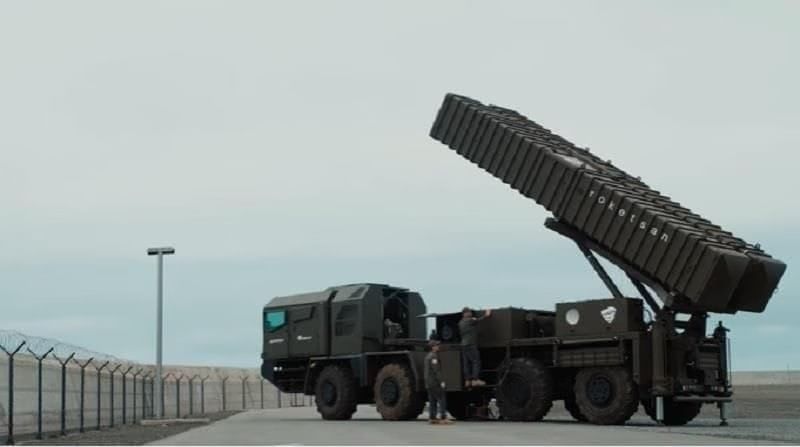 Why in News?
Why in News?
Turkey has recently introduced its first hypersonic ballistic missile, the Tayfun Block-4, during a ceremony held in Istanbul, marking a significant milestone in its defense capabilities.
Key Takeaways
- The Tayfun Block-4 is Turkey's longest-range nationally produced ballistic missile.
- It is classified as a hypersonic missile, capable of speeds exceeding Mach-5 (five times the speed of sound).
- Developed by the Turkish defense firm Roketsan, it features advanced technology for enhanced performance.
Additional Details
- Dimensions and Weight: The missile measures 6.5 meters in length and has a total weight of approximately 2,300 kilograms.
- Speed and Maneuverability: It is designed for high speed and advanced maneuverability, allowing it to evade enemy defenses effectively.
- Operational Range: The operational range extends up to 800 kilometers, with future plans to enhance this range to 1000 kilometers.
- Guidance System: The missile utilizes a sophisticated guidance system that integrates GPS, GLONASS technologies, and inertial navigation (INS), ensuring high accuracy with a maximum deviation of only 5 meters per shot.
- Warhead Type: Equipped with a fragmentation warhead, the missile employs 'solid composite' fuel, enabling rapid and effective strikes on critical targets such as air defense systems, command centers, and essential infrastructure.
The introduction of the Tayfun Block-4 signifies Turkey's entry into the hypersonic ballistic missile era, enhancing its strategic defense capabilities and reinforcing its position in regional security dynamics.
INS Sandhayak's Maiden Port Call at Port Klang, Malaysia
Why in News?
The Indian Navy's INS Sandhayak recently made its inaugural port visit to Port Klang, Malaysia, focusing on enhancing hydrographic cooperation.
Key Takeaways
- INS Sandhayak is the first indigenously designed and constructed Sandhayak-class hydrographic survey ship.
- Commissioned in February 2024, it was built by Garden Reach Shipbuilders & Engineers (GRSE) in Kolkata.
- The ship is equipped for comprehensive coastal and deep-water surveys, oceanographic data collection, and Search and Rescue (SAR) operations.
Additional Details
- Primary Purpose: Conducts thorough hydrographic surveys for port and harbor approaches, determining navigational channels and routes.
- Operational Zone: Extends up to maritime limits, covering the Exclusive Economic Zone (EEZ) and the extended continental shelf.
- Secondary Role: Can provide limited defense capabilities and serve as a hospital ship during wartime or emergencies.
- Advanced Equipment: Features a Data Acquisition and Processing System, Autonomous Underwater Vehicle, Remotely Operated Vehicle, DGPS, long-range positioning systems, and digital side-scan sonar.
- Speed: Powered by two diesel engines, the vessel can exceed speeds of 18 knots.
- The ship's visit to Port Klang aims to facilitate technical exchanges and strengthen institutional ties through cooperation in survey technologies and hydrographic support.
This visit underscores the Indian Navy's commitment to enhancing maritime security and fostering international cooperation in hydrographic endeavors.
Exercise Prachand Shakti
Why in News?
The Indian Army has taken a significant step towards modernizing its battlefield capabilities with the high-impact demonstration known as 'Prachand Shakti'. This event illustrates the Army's commitment to integrating advanced technologies into military operations.
Key Takeaways
- The exercise was conducted by the Indian Army at the Kharga Corps Field Training Area in Meerut, Uttar Pradesh.
- Focus on the use of disruptive technologies by infantry units during Strike Corps operations.
- Demonstration aimed to enhance the agility, lethality, and survivability of infantry formations engaged in deep offensive missions.
- Highlighted the evolving nature of warfare, emphasizing the role of UAVs, AI systems, and autonomous platforms.
Additional Details
- Disruptive Technologies: These include Unmanned Aerial Vehicles (UAVs), AI-enabled systems, and loitering munitions that are transforming operational capabilities in combat scenarios.
- This demonstration is part of the Indian Army's broader initiative for the 'Year of Tech Absorption', focusing on integrating innovative technological solutions from civilian sectors into military practices.
This event underscores the Indian Army's strategic shift towards embracing modern technologies, thereby enhancing its operational effectiveness and readiness to adapt to the changing dynamics of warfare.
Acquisition of Bitra Island for Defence Purposes
Why in News?
The Lakshadweep administration is contemplating the acquisition of Bitra Island, one of the inhabited islands in the archipelago, to establish a defence base. This decision underscores the strategic importance of the island in enhancing India's defence capabilities in the region.
Key Takeaways
- Bitra Island is the smallest inhabited island in Lakshadweep.
- The island features a shrine dedicated to Malik Mulla, an ancient Arab saint, attracting pilgrims.
- The climate of Bitra resembles that of Kerala, with temperatures ranging from 25°C to 35°C.
- Bitra is recognized as a breeding ground for various sea birds.
- This acquisition would make Bitra the third island in Lakshadweep with a defence establishment, joining INS Dweeprakshak and INS Jatayu.
Additional Details
- Geographical Location: Bitra Island is situated in the northern part of Lakshadweep, highlighting its strategic position in the Indian Ocean.
- The island experiences high humidity levels, ranging from 70% to 76% for most of the year, which is typical for the region.
- The potential establishment of a naval base on Bitra Island aims to bolster India's maritime security.
The proposal to acquire Bitra Island reflects the strategic priorities of India, particularly in enhancing its defence infrastructure in the Lakshadweep archipelago. This move is expected to contribute significantly to national security and maritime operations in the Indian Ocean region.
INS Sandhayak's Maiden Port Call at Port Klang, Malaysia
Why in News?
The Indian Navy's INS Sandhayak recently made its inaugural port visit to Port Klang, Malaysia, focusing on enhancing hydrographic cooperation.
Key Takeaways
- INS Sandhayak is the first indigenously designed and constructed Sandhayak-class hydrographic survey ship.
- Commissioned in February 2024, it was built by Garden Reach Shipbuilders & Engineers (GRSE) in Kolkata.
- The ship is equipped for comprehensive coastal and deep-water surveys, oceanographic data collection, and Search and Rescue (SAR) operations.
Additional Details
- Primary Purpose: Conducts thorough hydrographic surveys for port and harbor approaches, determining navigational channels and routes.
- Operational Zone: Extends up to maritime limits, covering the Exclusive Economic Zone (EEZ) and the extended continental shelf.
- Secondary Role: Can provide limited defense capabilities and serve as a hospital ship during wartime or emergencies.
- Advanced Equipment: Features a Data Acquisition and Processing System, Autonomous Underwater Vehicle, Remotely Operated Vehicle, DGPS, long-range positioning systems, and digital side-scan sonar.
- Speed: Powered by two diesel engines, the vessel can exceed speeds of 18 knots.
- The ship's visit to Port Klang aims to facilitate technical exchanges and strengthen institutional ties through cooperation in survey technologies and hydrographic support.
This visit underscores the Indian Navy's commitment to enhancing maritime security and fostering international cooperation in hydrographic endeavors.
INS Sandhayak's Maiden Port Call at Port Klang, Malaysia
Why in News?
The Indian Navy's INS Sandhayak recently made its inaugural port visit to Port Klang, Malaysia, focusing on enhancing hydrographic cooperation.
Key Takeaways
- INS Sandhayak is the first indigenously designed and constructed Sandhayak-class hydrographic survey ship.
- Commissioned in February 2024, it was built by Garden Reach Shipbuilders & Engineers (GRSE) in Kolkata.
- The ship is equipped for comprehensive coastal and deep-water surveys, oceanographic data collection, and Search and Rescue (SAR) operations.
Additional Details
- Primary Purpose: Conducts thorough hydrographic surveys for port and harbor approaches, determining navigational channels and routes.
- Operational Zone: Extends up to maritime limits, covering the Exclusive Economic Zone (EEZ) and the extended continental shelf.
- Secondary Role: Can provide limited defense capabilities and serve as a hospital ship during wartime or emergencies.
- Advanced Equipment: Features a Data Acquisition and Processing System, Autonomous Underwater Vehicle, Remotely Operated Vehicle, DGPS, long-range positioning systems, and digital side-scan sonar.
- Speed: Powered by two diesel engines, the vessel can exceed speeds of 18 knots.
- The ship's visit to Port Klang aims to facilitate technical exchanges and strengthen institutional ties through cooperation in survey technologies and hydrographic support.
This visit underscores the Indian Navy's commitment to enhancing maritime security and fostering international cooperation in hydrographic endeavors.
Exercise Prachand Shakti
Why in News?
The Indian Army has taken a significant step towards modernizing its battlefield capabilities with the high-impact demonstration known as 'Prachand Shakti'. This event illustrates the Army's commitment to integrating advanced technologies into military operations.
Key Takeaways
- The exercise was conducted by the Indian Army at the Kharga Corps Field Training Area in Meerut, Uttar Pradesh.
- Focus on the use of disruptive technologies by infantry units during Strike Corps operations.
- Demonstration aimed to enhance the agility, lethality, and survivability of infantry formations engaged in deep offensive missions.
- Highlighted the evolving nature of warfare, emphasizing the role of UAVs, AI systems, and autonomous platforms.
Additional Details
- Disruptive Technologies: These include Unmanned Aerial Vehicles (UAVs), AI-enabled systems, and loitering munitions that are transforming operational capabilities in combat scenarios.
- This demonstration is part of the Indian Army's broader initiative for the 'Year of Tech Absorption', focusing on integrating innovative technological solutions from civilian sectors into military practices.
This event underscores the Indian Army's strategic shift towards embracing modern technologies, thereby enhancing its operational effectiveness and readiness to adapt to the changing dynamics of warfare.
Acquisition of Bitra Island for Defence Purposes
Why in News?
The Lakshadweep administration is contemplating the acquisition of Bitra Island, one of the inhabited islands in the archipelago, to establish a defence base. This decision underscores the strategic importance of the island in enhancing India's defence capabilities in the region.
Key Takeaways
- Bitra Island is the smallest inhabited island in Lakshadweep.
- The island features a shrine dedicated to Malik Mulla, an ancient Arab saint, attracting pilgrims.
- The climate of Bitra resembles that of Kerala, with temperatures ranging from 25°C to 35°C.
- Bitra is recognized as a breeding ground for various sea birds.
- This acquisition would make Bitra the third island in Lakshadweep with a defence establishment, joining INS Dweeprakshak and INS Jatayu.
Additional Details
- Geographical Location: Bitra Island is situated in the northern part of Lakshadweep, highlighting its strategic position in the Indian Ocean.
- The island experiences high humidity levels, ranging from 70% to 76% for most of the year, which is typical for the region.
- The potential establishment of a naval base on Bitra Island aims to bolster India's maritime security.
The proposal to acquire Bitra Island reflects the strategic priorities of India, particularly in enhancing its defence infrastructure in the Lakshadweep archipelago. This move is expected to contribute significantly to national security and maritime operations in the Indian Ocean region.
INS Nistar and INS Nipun - Strengthening India’s Deep Sea Rescue and Maritime Capabilities
Why in News?
India has recently commissioned two advanced Diving Support Vessels (DSVs), INS Nistar and INS Nipun, which have been developed indigenously by Hindustan Shipyard Limited (HSL). This marks a significant milestone in India's journey towards self-reliance in maritime defense.
Key Takeaways
- INS Nistar and INS Nipun are crucial for the Indian Navy’s underwater rescue and salvage operations.
- These DSVs enhance India’s capabilities in deep-sea interventions, including submarine rescue missions and Search and Rescue (SAR) operations.
Additional Details
- Indigenous Design and Construction: INS Nistar and INS Nipun are the first indigenously designed and constructed DSVs in India, showcasing advancements in naval engineering.
- The vessels were developed under the Ministry of Defence’s 'Aatmanirbhar Bharat' initiative, emphasizing India's growing capabilities in shipbuilding.
- Diving and Rescue Capabilities:
- Integrated Saturation Diving System (ISDS): Allows diver deployment at depths of up to 300 meters, facilitating underwater repairs and rescue operations.
- Remotely Operated Vehicles (ROVs): Used for underwater surveillance and recovery tasks in deep waters.
- Side Scan Sonar and Integrated Platform Management System (IPMS): Assist in locating submerged objects and managing onboard systems.
- Submarine Rescue System: Essential for emergency submarine situations, enabling quick and safe personnel recovery.
- Humanitarian and Strategic Utility: The DSVs will support disaster relief during maritime emergencies, SAR operations during shipwrecks or aircraft crashes at sea, and offshore resource exploration.
The commissioning of INS Nistar and INS Nipun significantly enhances the Indian Navy's submarine rescue capabilities, allowing for rapid response to emergencies without dependence on international assistance. Furthermore, their deployment capabilities strengthen India's operational preparedness and deterrence in the Indian Ocean Region.
Significance of INS Nistar and INS Nipun
- These vessels represent a major boost to India's indigenous defense manufacturing efforts and local shipbuilding industries.
- INS Nistar's name honors a 1971-era ship that played a vital role in rescuing crew members from a submarine accident, while INS Nipun signifies precision and readiness in maritime operations.
Future Outlook
With the increasing strategic competition in the Indian Ocean, the operational readiness of INS Nistar and INS Nipun will enhance the Indian Navy's ability to monitor underwater threats and conduct advanced salvage operations. These vessels are timely additions to India's aspirations for a more robust blue water navy, ensuring maritime security and freedom of navigation in the Indo-Pacific region.
Akash Prime Missile
Why in News?
Recently, India marked a significant achievement by successfully intercepting two high-speed unmanned aerial targets at elevated altitudes in Ladakh using the Akash Prime missile system.
Key Takeaways
- The Akash Prime missile is an upgraded variant designed specifically for high-altitude operations.
- It serves as a medium-range surface-to-air missile platform, offering protection to various military installations against aerial threats.
Additional Details
- Indigenous Radio Frequency Seeker: This advanced feature allows the missile to emit radio signals and accurately home in on targets during the final flight phase.
- Targeting Range: The Akash Prime can effectively target objects within a range of approximately 25 to 30 kilometers.
- Enhanced performance characteristics have been integrated to ensure reliability in low-temperature environments at high elevations.
- It is specifically engineered for deployment at altitudes exceeding 4,500 meters.
- These enhancements were made based on feedback from the armed forces to bolster air defense for critical installations and sensitive areas in high-altitude regions.
The successful trial of the Akash Prime missile underscores India's commitment to advancing its defense capabilities, particularly in challenging environments.
Key Facts about the Javelin Missile
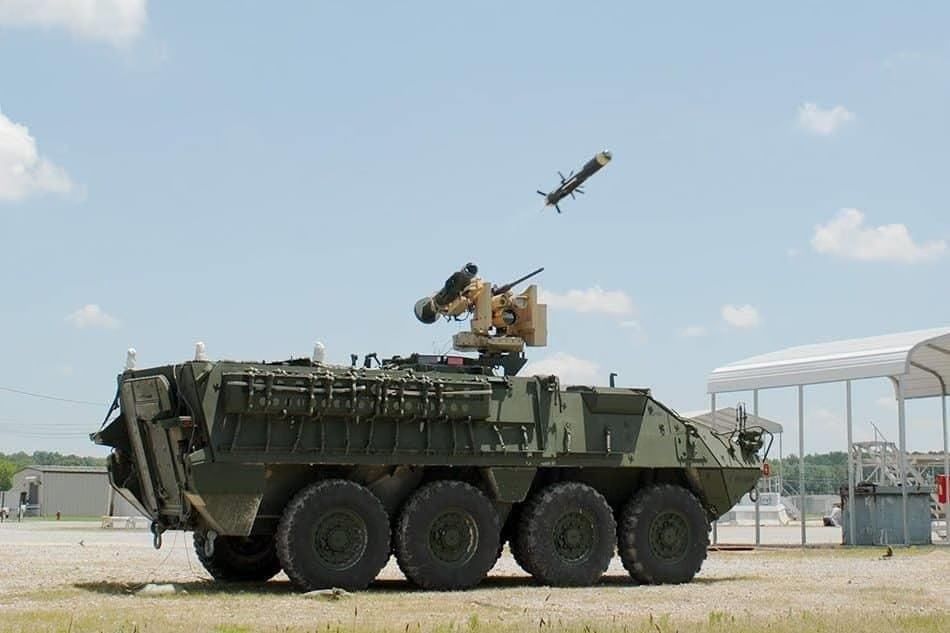 Why in News?
Why in News?
India has recently submitted a request to the United States for co-production of Javelin anti-tank guided missiles (ATGMs) within its own territory, highlighting the importance of this advanced military technology.
Key Takeaways
- The Javelin is an American-made, man-portable anti-tank guided missile.
- It was developed and produced collaboratively by Raytheon and Lockheed Martin.
- Designed to effectively combat heavily armored vehicles, it can also target fortifications and helicopters.
- The missile first entered service with the U.S. military in 1996.
Additional Details
- Effective Range: The Javelin has a notable effective range of 2.5 kilometers, with newer variants capable of reaching up to 4 kilometers.
- Weight: It weighs approximately 5.11 kg, making it manageable for individual soldiers.
- Guidance System: The missile employs “fire-and-forget” technology, which allows it to autonomously guide itself to the target without requiring further commands after launch. This feature enables soldiers to reposition immediately or reload to engage additional threats.
- Attack Modes: The Javelin can engage targets in both direct and top-attack modes. The top-attack mode is specifically designed to exploit vulnerabilities in the thinner armor on the tops of tanks.
The introduction of the Javelin missile into India's defense strategy marks a significant step in enhancing the country’s military capabilities, especially in countering armored threats.
Exercise Talisman Sabre 2025
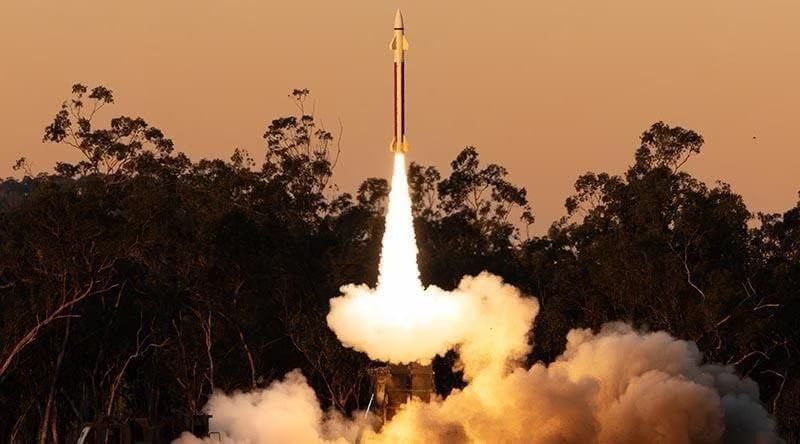 Why in News?
Why in News?
India is participating in Talisman Sabre 2025, marking the 11th and largest edition of the Australia-U.S.-led multinational military exercise, which will involve over 35,000 personnel from 19 countries.
Key Takeaways
- This iteration is the largest and most complex in the exercise's history.
- It aims to enhance combat readiness and improve interoperability among participating forces.
Additional Details
- About Exercise Talisman Sabre: This is a biennial multinational joint military exercise co-led by Australia and the United States.
- Inception: The exercise began in 2005 and has been held every two years, typically during odd-numbered years.
- Objective: Its primary aim is to enhance combat readiness, improve interoperability, and strengthen joint operations capabilities among the armed forces of the participating nations.
- Scope of Operations: The exercise focuses on high-end warfighting, including crisis-action planning, contingency response, and multi-domain operations across land, air, sea, cyber, and space.
- Strategic Importance: It promotes regional security cooperation and supports the vision of a free, open, and inclusive Indo-Pacific.
Key Features of the 2025 Edition
- Scale: The 2025 edition will involve over 35,000 military personnel from 19 countries.
- Participating Nations: Full participants include Australia, the United States, India, Canada, Fiji, France, Germany, Indonesia, Japan, the Netherlands, New Zealand, Norway, Papua New Guinea, the Philippines, South Korea, Singapore, Thailand, Tonga, and the United Kingdom. Observer nations include Malaysia and Vietnam.
- Geographical Expansion: For the first time, parts of the exercise will be conducted outside Australia.
- New Defence Capabilities: The exercise will showcase the UH-60M Black Hawk helicopters and the Precision Strike Missile (PrSM) system introduced by the Australian Defence Force.
- Multi-Domain Focus: Operations will span across land, sea, air, space, and cyberspace, reflecting the modern, multi-domain nature of warfare.
- Strategic Outcome: The exercise aims to improve regional response capabilities, strengthen defence partnerships, and promote peace and stability in the region.
Exercise Talisman Sabre 2025 represents a critical effort to enhance military cooperation among nations in the Indo-Pacific region and demonstrates a commitment to collective security and preparedness.
Operation Shiva Launched for Amarnath Yatra Security
Why in News?
The Indian Army has recently initiated Operation Shiva to enhance security measures for the ongoing Amarnath Yatra, an annual Hindu pilgrimage to the sacred Amarnath Cave in Jammu & Kashmir.
Key Takeaways
- Operation Shiva aims to ensure the safe and smooth conduct of the Amarnath Yatra.
- Over 8,500 troops have been deployed for robust security along the Yatra routes.
- The operation involves advanced technological resources and close coordination with civil authorities.
Additional Details
- Amarnath Yatra: This annual pilgrimage takes place to the Amarnath Cave, known for its naturally formed ice Shivling, which symbolizes Lord Shiva.
- Security Measures: The operation includes a dynamic counter-terrorism grid, prophylactic security deployment, and corridor protection measures.
- Technological Support: A Counter-Unmanned Aerial System (C-UAS) grid has been established with over 50 systems to neutralize drone threats.
- Medical Assistance: More than 150 doctors and medical personnel have been deployed, along with advanced medical facilities to support the Yatra.
- Live Monitoring: Unmanned Aerial Vehicles (UAVs) are utilized for real-time monitoring of Yatra routes and the Holy Cave.
Operation Shiva represents a significant effort by the Indian Army to provide comprehensive security and support for the pilgrims during a time of heightened threats, ensuring that the sacred Yatra can proceed safely.
Delivery of the Nistar Vessel to the Indian Navy
Why in News?
The 'Nistar' vessel has recently been delivered to the Indian Navy by Hindustan Shipyard Limited, marking a significant milestone in India's naval capabilities.
Key Takeaways
- The Nistar is the first indigenously designed and constructed Diving Support Vessel in India.
- Its name, 'Nistar', is derived from Sanskrit, meaning liberation, rescue, or salvation.
- It is designed according to the classification rules of the Indian Register of Shipping (IRS).
- The vessel specializes in deep-sea diving and rescue operations.
Additional Details
- Dimensions and Capacity: The Nistar measures 118 meters in length and has a tonnage of nearly 10,000 tons.
- Diving Capabilities: It is equipped with advanced diving equipment capable of undertaking Deep Sea Saturation Diving up to 300 meters and includes a Side Diving Stage for operations up to 75 meters.
- Role as a Mother Ship: The Nistar serves as a 'Mother Ship' for the Deep Submergence Rescue Vessel (DSRV), facilitating the rescue and evacuation of personnel in emergencies underwater.
- Advanced Technology: The ship incorporates a range of Remotely Operated Vehicles for Diver Monitoring and Salvage Operations at depths of up to 1,000 meters.
- Indigenous Content: With approximately 75% indigenous content, the Nistar represents a significant achievement in the Indian Navy's efforts towards self-reliance and aligns with the Government of India's vision of Aatmanirbhar Bharat and the Make in India initiative.
The delivery of the Nistar not only enhances the operational capabilities of the Indian Navy but also underscores India's commitment to indigenous defense manufacturing and technology development.
National Maritime Domain Awareness (NMDA) Project
Why in News?
The Indian Navy has recently entered into a contract with M/s Bharat Electronics Limited (BEL), based in Bengaluru, to implement the National Maritime Domain Awareness (NMDA) Project, which is crucial for enhancing maritime and coastal security.
Key Takeaways
- The NMDA Project aims to strengthen maritime and coastal security in India.
- It focuses on integrating data collation, analysis, and information sharing among various maritime stakeholders.
- The project will upgrade the existing National Command, Control, Communication, and Intelligence (NC3I) Network to the NMDA Network.
- AI-enabled software will be incorporated for improved surveillance and decision-making capabilities.
Additional Details
- Upgradation of IMAC: The Information Management and Analysis Centre (IMAC) in Gurugram will be transformed into a Multi-Agency NMDA Centre, enhancing its role as the nodal center of the NC3I Network.
- Collaboration: The upgraded centre will host personnel from 15 agencies across seven key ministries, including Defence, Shipping, Petroleum, and Fisheries, facilitating seamless coordination and information sharing.
- Unified Operational Picture: The NMDA project will link various maritime agencies as well as coastal states and union territories, providing a unified operational picture of India's extensive coastline and surrounding seas.
- Data Integration: It will integrate data from sectors such as commercial shipping and fisheries, thereby enhancing response capabilities to maritime threats, search-and-rescue operations, and environmental incidents.
- Turnkey Execution: The project will be executed on a turnkey basis, with the Indian Navy acting as the lead integrator to provide state-of-the-art hardware and AI-enabled software solutions.
In conclusion, the NMDA Project represents a significant step towards enhancing India's maritime security and operational capabilities, ensuring a comprehensive approach to maritime domain awareness.
Extended Range Anti-Submarine Rocket (ERASR)
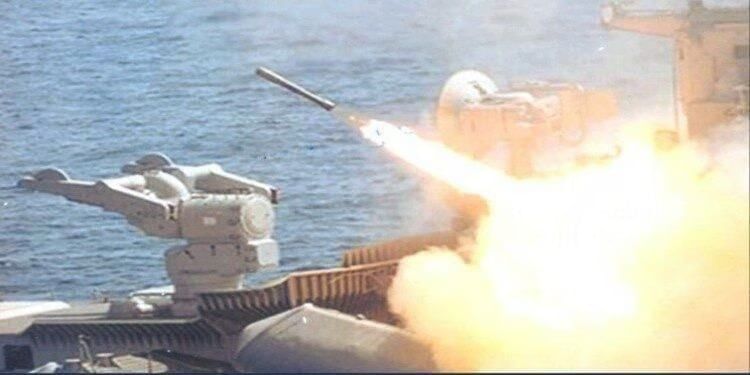 Why in News?
Why in News?
The recent successful user trials of the Extended Range Anti-Submarine Rocket (ERASR) from INS Kavaratti mark a significant advancement in India's naval capabilities.
Key Takeaways
- The ERASR is designed for the indigenous rocket launcher (IRL) of Indian naval ships.
- This rocket system is entirely developed within India, reinforcing the nation's self-reliance in defense technologies.
- The ERASR is specifically intended for combating submarines.
- It is launched from the onboard IRLs of naval vessels.
Additional Details
- Twin-Rocket Motor Configuration: The ERASR features a twin-rocket motor setup to cater to a diverse range of operational requirements while ensuring high accuracy and reliability.
- Electronic Time Fuze: The rocket employs an indigenously developed electronic time fuze, enhancing its operational effectiveness.
- A total of 17 ERASRs were successfully evaluated during trials at various ranges, demonstrating optimal performance in range, electronic fuze functioning, and warhead effectiveness.
- Production partners for the ERASR include Bharat Dynamics Limited, Hyderabad, and Solar Defence & Aerospace Limited, Nagpur.
- With the completion of user trials, the Indian Navy is poised to induct the ERASR system shortly.
- The system was designed and developed by the DRDO's Armament Research & Development Establishment (ARDE) based in Pune, in collaboration with the High Energy Materials Research Laboratory and the Naval Science & Technological Laboratory.
The successful trials of the ERASR reflect India's commitment to enhancing its naval defense capabilities and developing indigenous technologies to effectively address modern maritime threats.
What is the Defence Accounts Department (DAD)?
Why in News?
The Defence Minister recently highlighted the crucial role of the Defence Accounts Department (DAD) in improving the operational readiness and financial agility of the Armed Forces during the Controllers' Conference 2025 held in New Delhi.
Key Takeaways
- The DAD operates under the administrative control of the Ministry of Defence.
- It is led by the Controller General of Defence Accounts (CGDA).
- The department's primary responsibilities include audit, financial advice, payment, and accounting for the Armed Forces.
Additional Details
- Functions of DAD:
- Handles bills for supplies, services, construction, repairs, pay, allowances, and pensions for defence personnel and civilians.
- Conducts audits of cash and store accounts for all organizations under the Ministry of Defence.
- Geographical Spread: The DAD has a wide network of 1,110 officescatering to the needs of the Indian Defence Services, including the Army, Air Force, Navy, and other organizations under the Ministry of Defence, such as:
- Defence Ordnance Factories (41)
- DRDO Laboratories/Projects (50)
- Coast Guard, DGQA, DGBR, DGNCC, DG Defence Estates, and Canteen Stores Department (CSD).
- Responsibilities of CGDA: Acts as the principal accounting officer for the Ministry of Defence, providing necessary information for Appropriation Accounts and preparing Annual Consolidated Accounts of Defence Services Receipts & Charges.
- Historical Background:
- The DAD is one of the oldest departments within the Government of India, with origins tracing back to Military Pay Masters under the East India Company in 1750.
- The title and structure of the department evolved through various stages, formally becoming the Defence Accounts Department on October 1st, 1951.
In conclusion, the Defence Accounts Department plays a pivotal role in the financial management and operational support of the Indian Armed Forces, ensuring efficient accounting and auditing processes that are crucial for national security and defense preparedness.
AI Warfare and Multi-Domain Ops: Battlegrounds of the Agentic Age
Why in News?
The landscape of warfare is experiencing a profound shift due to the integration of artificial intelligence (AI) in military strategies, particularly by nations like China. This evolution presents significant strategic challenges for countries such as India, emphasizing the urgent need to enhance technological and energy capabilities in the face of these developments.
Key Takeaways
- China is leveraging AI for advanced military applications, including autonomous weapons and decision-making processes.
- The collaboration between China and Pakistan in AI technology raises security concerns for India.
- Energy infrastructure, particularly nuclear power, is crucial for sustaining AI-driven military operations.
- India's current nuclear energy capacity is insufficient to support future defense needs.
Additional Details
- China's Early Lead in Military AI Deployment: The People's Liberation Army (PLA) has incorporated AI into its military functions, enhancing artillery systems and drone capabilities for precise targeting.
- China-Pakistan AI Collaboration: The establishment of Pakistan's Centre of Artificial Intelligence and Computing, with China's assistance, poses a strategic threat by focusing on cognitive electronic warfare.
- Energy: The Hidden Backbone of Future AI Warfare: The effective operation of AI technologies in military contexts requires robust energy resources. Nuclear energy is increasingly viewed as essential for powering AI data centers.
- India’s Nuclear Shortfall: With a nuclear power capacity of only 7.5 GW, India faces significant limitations in developing AI-driven defense capabilities. Experts suggest positioning Small Modular Reactors (SMRs) to support AI infrastructures.
- Global Precedents: Examples from Ukraine and Israel illustrate the practical applications of AI in military operations, demonstrating its potential to revolutionize warfare.
In conclusion, as AI continues to shape modern warfare, it is imperative for India to bridge technological and energy gaps to remain competitive in the evolving landscape of multi-domain operations.
Space-Based Surveillance-III Programme (SBS-III)
 Why in News?
Why in News?
The Union Government has recently prioritized the launch of 52 dedicated surveillance satellites as part of the Space-Based Surveillance-III (SBS-III) programme, aimed at enhancing India's defense capabilities through advanced satellite technology.
Key Takeaways
- The SBS-III programme was approved in October 2023 by the Prime Minister-led Cabinet Committee on Security.
- It includes the construction and launch of 52 satellites: 21 by ISRO and 31 by private companies.
- The first satellite is expected to be launched by April 2026, with the full constellation targeted for completion by the end of 2029.
- The programme aims to improve surveillance over China, Pakistan, and the Indian Ocean Region.
Additional Details
- Objective of SBS-III: The primary goal is to cover larger areas with shorter revisit times, enabling better resolution in surveillance activities.
- Enhanced Surveillance: The new satellites will leverage AI for improved interaction and GeoIntelligence gathering.
- The project is projected to cost approximately ₹26,968 crore.
- Defence Space Agency (DSA): This agency, formed in 2019, leads the project and coordinates with ISRO, DRDO, and the armed forces to develop military space strategies.
- The DSA has replaced the Integrated Space Cell and is responsible for overseeing India’s military space operations.
The SBS-III programme represents a significant advancement in India’s strategic capabilities, particularly in countering potential threats and enhancing national security through advanced surveillance technologies.
|
201 videos|1016 docs|2274 tests
|
FAQs on Internal Security and Disaster Management: July 2025 Current Affairs - General Test Preparation for CUET UG - CUET Commerce
| 1. What is the Pralay missile and what are its key features? |  |
| 2. What was the objective of Exercise Divya Drishti? |  |
| 3. What are the implications of the retirement of MiG-21 aircraft for the Indian Air Force? |  |
| 4. How does the Javelin Anti-Tank Guided Missile (ATGM) enhance ground combat capabilities? |  |
| 5. What role does the acquisition of Bitra Island serve in India's defense strategy? |  |
















